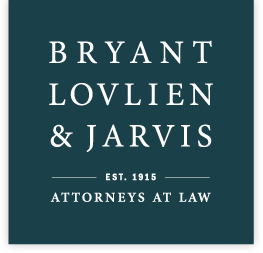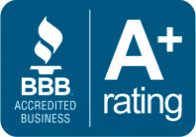The majority of businesses are formed as “for profit” entities whose purpose is to generate revenue for its shareholders, meaning that corporations are generally obligated to act in a way that will maximize shareholder distributions/wealth. This “shareholder wealth maximization” principle has caused tension over the years as for-profit companies have gradually sought to act in ways that are more socially conscious, even if that means less profit for its shareholders. To illustrate, imagine that a company chooses to use a more environmentally sustainable manufacturing process that results in less net profit from the sale of the exact same goods. While the change in manufacturing might be better for various stakeholders (e.g., local community, employees, environmental advocacy groups, etc.), it directly takes away from the potential revenue that shareholders may expect to receive. While for profit companies are permitted to reasonably consider non-shareholder interests, over time, a company’s decision to pursue social missions over shareholder wealth maximization may cause concern and frustration amongst shareholders; something that has historically led to lawsuits alleging breaches of fiduciary duties and largescale shareholder withdrawal.
On the other end of the spectrum is the not-for-profit businesses, or nonprofit corporations. Unlike for-profit businesses, the very purpose of a nonprofit is to further a social cause. While nonprofits are a great option for those who are more concerned about supporting a social good than maximizing profit for the company’s directors/shareholders, they are less appealing to individuals who would still like to make some profit from their business. Of course, directors and other employees may take a reasonable salary for their nonprofit work, but nonprofits are subject to the non-distribution constraint. This means that all profit beyond those reasonable salaries and operational costs must go back into the business, none of it may go to the directors as a dividend-like distribution.
Benefit companies were created to address the apparent gap between the competing for-profit and not-for-profit entity types. The term benefit company can generally be interchanged with benefit corporation. You may have also heard of these social good companies referred to as “B Corps.” Although similar, B Corps, or B Corporations, are something different- rather than being formed as a benefit company/corporation, any business can become B Corp certified by a third-party nonprofit company called B Lab. Broadly speaking, all three serve the same purpose. Organizing as a benefit company, or being certified as a B Corp, signals to consumers, employees, and investors alike that the purpose of that business is to seek both to generate financial returns for investors while also pursuing social missions. In other words, benefit companies are the best of both the traditional corporation and the nonprofit entity types- benefit companies and B Corps operate to generate and distribute profits to the owners while still considering and acting on the desires and needs of stakeholders in order to further a social cause.
Benefit companies are the newest entity type in the United States. The first benefit corporation statute was passed in Maryland in 2010 and since then, dozens of states have followed suit. Currently, more than 3,400 Oregon businesses are registered benefit companies.
Beyond authorizing the benefit company corporate form, these statutes generally require that benefit companies include language in their organizational documents regarding the general public benefit that will be pursued. ORS 60.750 defines “[g]eneral public benefit” as “a material positive impact on society and the environment, taken as a whole, from the business and operations of a benefit company.”
Directors of benefit companies are not called directors, instead, ORS 60.750 employs the term “governor” to describe the director of a corporation that is a benefit company, a member in a member-managed LLC that is a benefit company, or a manager in a manager-managed LLC that is a benefit company. (Note that in Oregon, only corporations and LLCs may be organized as a benefit company.)Not only is the name of this person different, their duties and standards of conduct are distinct from those of a traditional director/member/manager as well. Per ORS 60.760, the benefit governor must act in the best interests of the benefit company by considering how an action of the governor or of the benefit company will affect:
- shareholders or members of the public benefit company;
- the employees and work force of the public benefit company as well as the employees and work force of the company’s subsidiaries and suppliers;
- the benefit company’s subsidiaries and suppliers;
- the interests that the benefit company’s customers have in receiving a portion of the general or specific public benefit that the company provides;
- the communities that the benefit company’s activities affect including, but not limited to, the communities in which the company is located, operates, or has offices or other facilities, and in which the benefit company’s subsidiaries and suppliers are located, operate, or have offices or other facilities;
- the local and global environment;
- the short-term and long-term interests of the benefit company, including an interest in benefits that might accrue from the company’s long-term plans; and
- the benefit company’s ability to fulfill the company’s general public benefit purpose and any specific public benefit identified in its articles of incorporation or articles of organization.
The duties of a benefit governor, as well as the additional language in the articles of incorporation, are some of the key pieces that separate a benefit company from a traditional for-profit corporation or LLC. Rather than permitting reasonable consideration of non-shareholder/member interests, benefit companies are required to consider and operate in a manner that takes other stakeholders’ interests into account.
In addition, benefit companies are required to prepare an annual benefit report that, among other things, gives a narrative description of the extent to which the benefit company provided a general and/or specific public benefit, the actions and methods used to provide such benefit, as well as any circumstances that hindered or prevented the company from providing a public benefit. This report must be distributed to each holder of an equity interest, and it must be publicly accessible on the benefit company’s website (or freely available to a person who requests a copy). All measurements of public benefit must be made using a third-party standard, adoption of which is required to become a registered benefit company in Oregon. The idea behind the annual report and third-party standards is to encourage transparency and accountability between a business and the public that it serves.
While these additional requirements may seem taxing at first, advocates of the benefit company form view it differently. Not only does this provide additional flexibility to the company/benefit governor(s) to pursue objectives beyond generating a profit without tension, but designation as a benefit company signals a business’ commitment to its community and/or its chosen social cause. This can help bring in like-minded investors, partners, and employees, but it can also bolster a businesses’ good will and reputation amongst an ever-growing population of socially- and environmentally conscious consumers. And in areas like Oregon, a company’s reputation for doing well for the community can, and often does, set it apart from its competitors.
While most benefit companies today are incorporated as such from the outset, ORS 60.754 permits existing businesses to amend their articles of incorporation or articles of organization to state that the company is a benefit company subject to ORS 60.750 – 60.770.
As briefly mentioned above, there is an alternative to incorporating a business as a benefit company that is designed to serve a similar purpose – a B Lab certification. The nonprofit behind these certifications is called B Lab, which has been a driving force in the creation and popularity of social enterprises around the world. B Lab “began in 2006 with the idea that a different kind of economy was not only possible, but necessary — and that business could lead the way towards a new, stakeholder-driven model. B Lab became known for certifying B Corporations, which are companies that meet high standards of social and environmental performance, accountability, and transparency.” Because this is a certification, it is available to any company that seeks it (and meets the qualifications), making it a popular option for businesses whose state and/or country has yet to adopt benefit corporation legislation but still wants to signal its commitment to a social good. B Lab sets its own standards and policies that companies must comply with to obtain and maintain their certification as a B Corp, many of which are much more exacting than what states impose on incorporated benefit companies. For more information about these standards and the B Lab certification process, you can visit the B Lab website at https://www.bcorporation.net
Benefit companies and B Corps can be summed up in three words – transparency, accountability, and purpose. While they are the newest type/entity to the business scene, these social enterprises have become increasingly popular amongst socially and environmentally conscious business owners around the world.
This blog post contains surface level descriptions of benefit companies and should not be relied on as any sort of complete discussion or checklist of the requirements of benefit companies. If you are a current or future business owner and believe that a benefit company may be a good fit for your business, or you are interested in learning more about this corporate form, please contact Makenzie Christy at christy@bljlawyers.com for further consultation.

